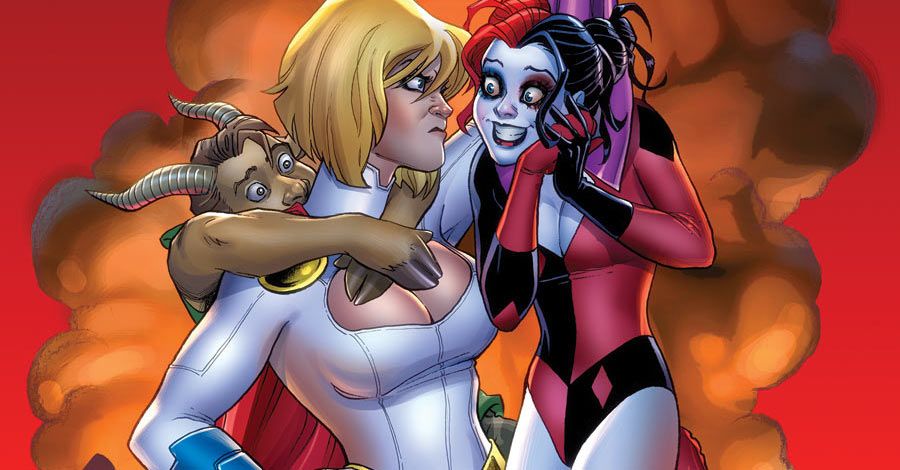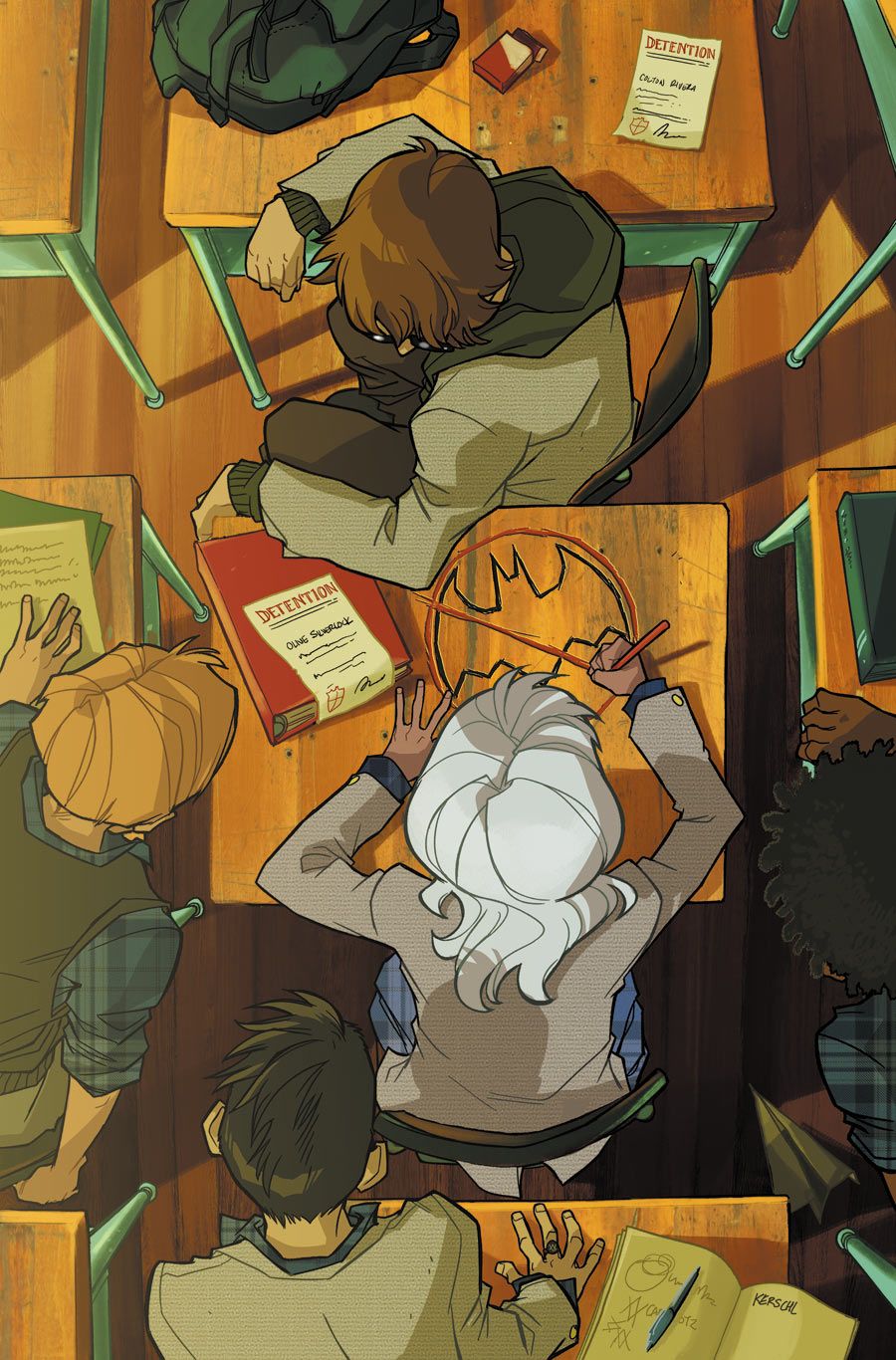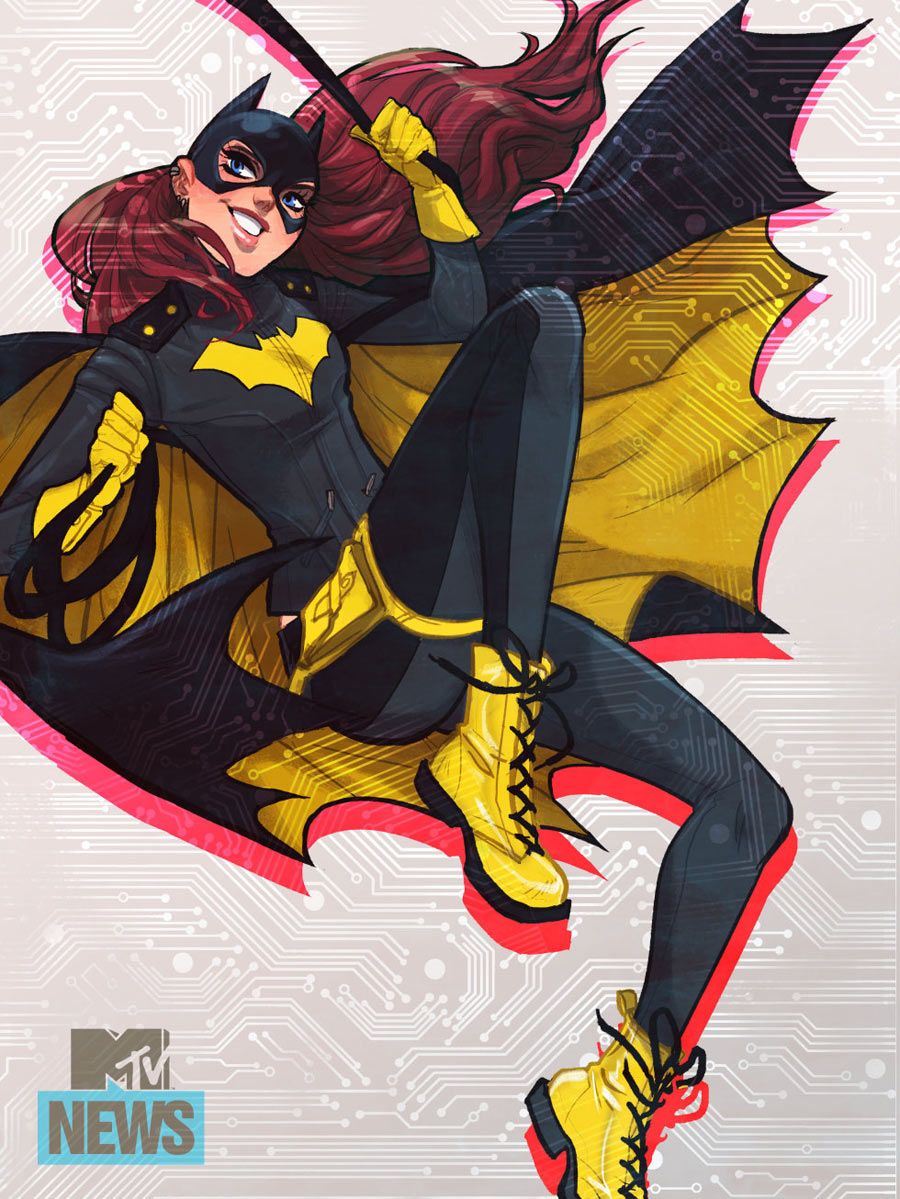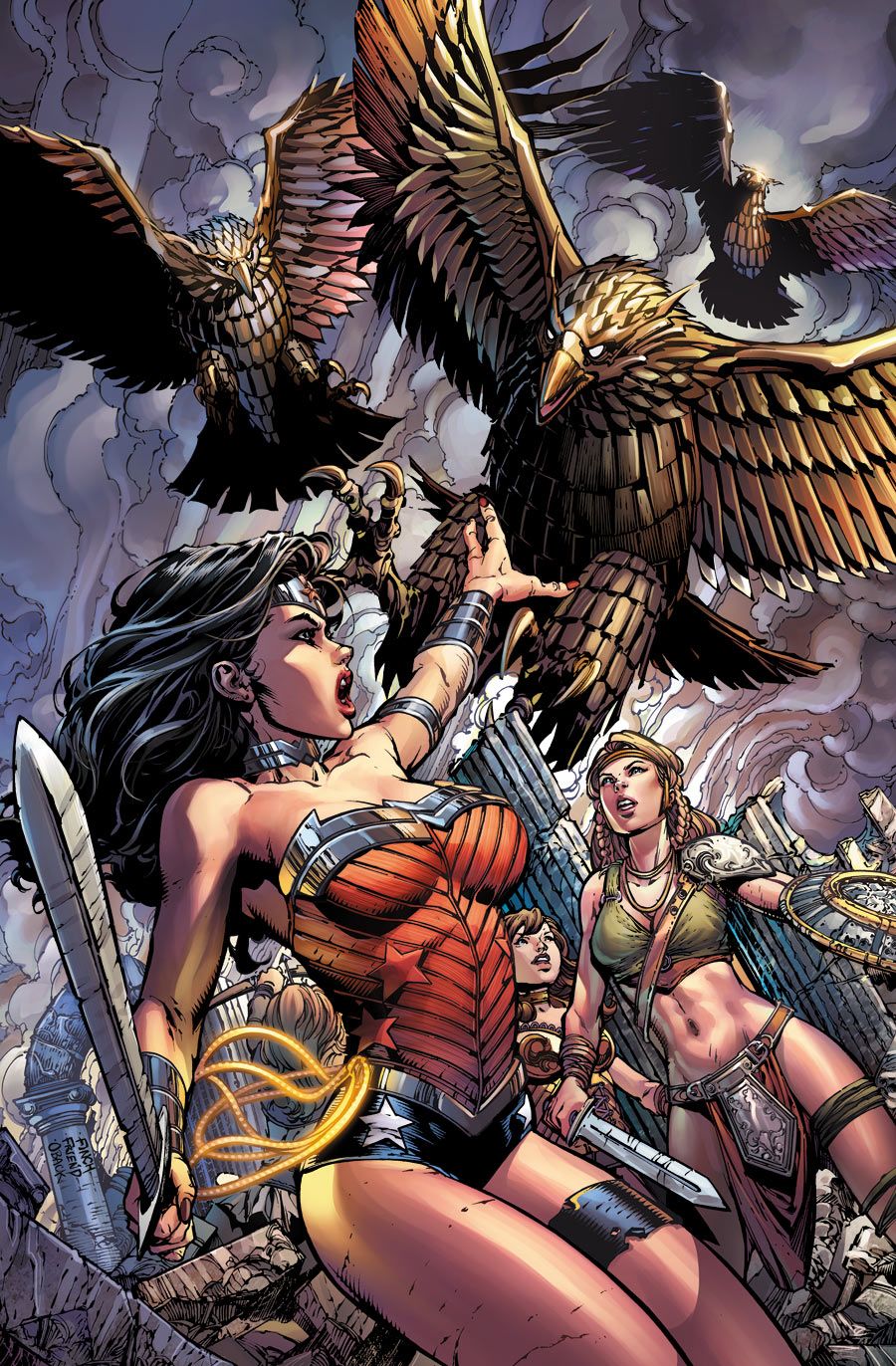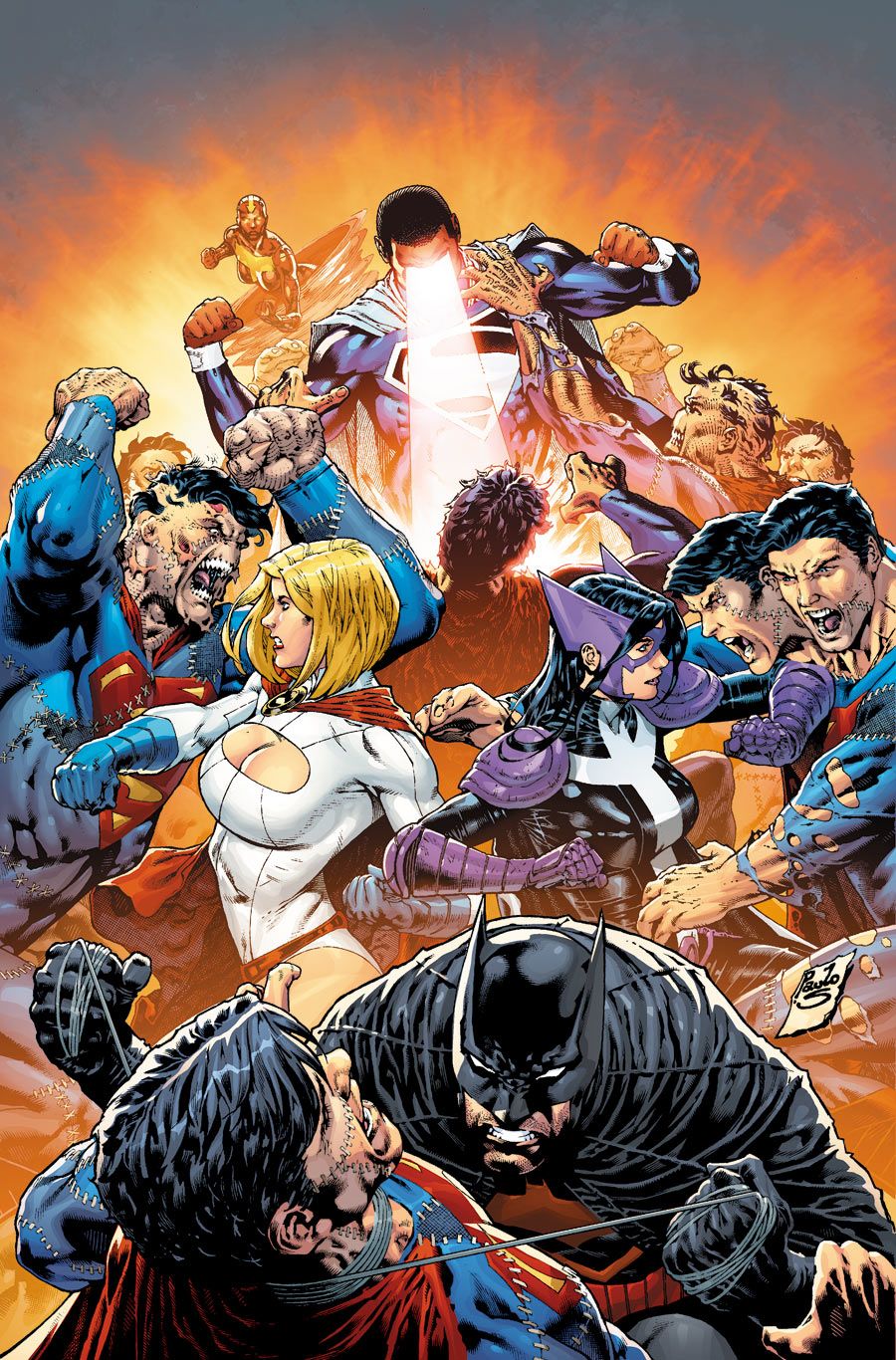"This is our industry," said moderator Amanda Salmons at the beginning of New York Comic Con's Women of DC Entertainment panel. "This is our house. We have been here for decades, and there were others before us. These writers, artists and editors up here on the panel are the industry. This is their world. Our world."
The audience roared its approval, and throughout the panel the crowd of almost 700, a fairly even mix of men and women, cheered and applauded not just Salmons' statements but the artists' comments about their work. And that's what the discussion focused on: The work.
"One of the panels that always seemed promising to me at conventions was the 'Women in Comics' panel," said Salmons, owner of Muse Comics + Games and a founder and former executive director of the retailer association ComicsPRO. "Promising in the idea that, hey, here is a place where I could learn about the creators, fellow colleagues, and what they are doing in my industry. The reality of that panel usually turns out to be a little different than what I was expecting. It's a little bit more like, 'Oh, hello token females! Please, speak for all women about how hard is it to work in comics.'"
Not this panel. Rather, Salmons engaged the creators in conversations about their work and their love of comics. The panelists were Shelly Bond, the executive editor of Vertigo; Bobbie Chase, executive editor for DC entertainment and one of the architects of the New 52; writer Marguerite Bennett, who co-writes "Earth 2" with Tom Taylor and is one of the writing team on the weekly "Earth 2: World's End" series; Becky Cloonan, who is co-writing the new series "Gotham Academy" and contributes variant covers to Vertigo series "The Kitchen"; Amanda Conner, cover artist and co-writer of "Harley Quinn" with her husband, Jimmy Palmiotti; Meredith Finch, who makes her DC writing debut on "Wonder Woman" #36, which is illustrated by her husband, David Finch; Caitlin Kittredge, writer of "Coffin Hill"; writer Gail Simone, who will be launching a new "Secret Six" series in December and is also working on a new Vertigo series, "The Clean Room"; and Babs Tarr, the artist for the just-revamped "Batgirl."
There was a bit of breaking news in the panel, when Simone announced that the Ventriloquist would be a member of the new Secret Six team; three other members, Catman, Black Alice and Strix, had already been announced.
Salmons started the discussion by asking each of the panelists, "Can you remember the moment that you realized comics were for you?"
Bond didn't read comics as a child, but when she took a screenwriting class, her professor showed her Peter Gross' "Empire Lanes" to explain storyboarding, and a fellow student suggested she visit the local comic shop. "I walked into the comic book store, and I was like Dorothy in Oz," she said. "Right in front of me, I found the books that would define my career path: I picked up 'Sandman,' I picked up 'Hellblazer,' I picked up 'Moonshadow' and 'Love and Rockets,' and that was it. I knew in that moment that I wanted to be part of this amazing community of comic book creators."
Kittredge also came to comics in college, but in a very different way: She lived so far from campus that she had a 25-minute commute every day on a bus that was known locally as "the meth bus," because, as she explained, "it was full of scary, creepy people who would talk your ear off at the slightest opportunity because they were all high on speed and wanted to tell you about the spiders in their brains." To block them out, she always wore headphones and read a book, and one day, when she had nothing to read, a friend lent her "Sandman" to use as a shield. "I finished it on the bus between the ride there and the ride back to campus the next morning," she said. "As soon as classes were over, even though I was broke -- so broke that I lived in an apartment on a bus line that was known as 'the meth bus' -- I went to the Barnes and Noble and I bought all the 'Sandman' trades, $125 worth of 'Sandman' trades, and I read them all over the next week. I was completely addicted from then on."
Tarr grew up reading manga, and she practiced drawing in different styles. "I tried to go into comic shops and find something that interests me, but I don't think they knew what to do with me," she said. Recently, "Batgirl" co-writer Cameron Stewart has been helping her discover new comics.
Finch grew up reading her parents' old Archie comics, because her rural community didn't have a comic book store. "I didn't know comics really existed until I met David," she said. "On our first date he said, 'I do comics,' and I said, 'OK, like in the newspaper,' and he said, 'No, more like comic books,' and I said 'Like Betty and Veronica?' 'No, not exactly.' He happened to have a couple of his comics in the car, and he gave me his 'Avengers Disassembled,' and if anybody has read that, I think on page 3, She-Hulk is ripping somebody apart, and that was my exposure to modern day comics. Must have been good art, because here I am today!"
Cloonan, in contrast to the others, was an avid comics reader as a child, and described in detail the copy of "Silver Surfer Annual" #1 that her father bought when she was eight years old. That comic, and "X-Men" #1, convinced her that she wanted to make comics herself.
Simone was a fan of the Adam West-starring "Batman" series. "Then, I found my first 'Justice League' comic at a garage sale, and I first saw Wonder Woman. Seeing a female character who didn't need a guy to come in and make her life happy was very, very exciting to me at the time." The audience erupted in applause at this statement. Simone was a stealth comic reader, often hiding her comics inside books, because few people, male or female, read comics in her community. "When I discovered 'Elfquest,' 'Love and Rockets' and 'Sandman,' I was really, really hooked. They really just pulled me in as a reader," she said. "I didn't know I wanted to be a comic book writer until I actually started writing comic books. I really enjoyed it from the beginning, and even though when I first started I didn't know how to structure a script, once I sat down and started writing my first 'Simpsons' comic, I fell in love with the structure and that way of storytelling. I always wanted to be a writer, but I didn't know I wanted to be a comic book writer until then."
Bennett started out watching "Batman: The Animated Series" after school. "It's a little tricky when people ask me which superhero I fell in love with," she said. "It was three super villainesses -- it was Catwoman, Poison Ivy and Harley Quinn." Bennett's parents made no distinction between "toys for girls" and "toys for boys." "I remember going into a comic book store, wanting to follow up on Catwoman, and it was really unwelcoming," she said, "I remember realizing, though, that my parents told me I'm allowed to be here. This is a toy for girls too. I guess that was the moment where [I realized] there's nothing wrong with me. We have always been here, we are always going to be here. The rest just have to realize that."
Conner started reading comics when the tooth fairy left a nickel and a copy of "MAD Magazine" under her pillow. ("Coolest tooth fairy ever," commented Simone.) "I wanted to be a lion tamer, a race car driver, an action movie star," Conner said, "I actually wanted to be a superhero, and when I found out that 'superhero' isn't a paying career, I thought maybe the next best thing is comic book artist."
Chase read "Archie" and "Richie Rich" as a child, but not superhero comics. Fresh out of college with a degree in English literature and a minor in art, she answered an ad in the New York Times for a job with a monthly graphic publication, which turned out to be Marvel Comics. At first she wasn't familiar with the comics, but then someone gave her a copy of "Daredevil: Born Again." "It was such a human story, and I loved it so much." She started asking her colleagues for more "human stories." "At the time, it was things like 'Love and Rockets' and 'Death: The High Cost of Living,' and I started getting into graphic novels, and that's when I started to fall in love with the business."
Noting that the members of the panel represented well over 100 years of collective experience, Salmons asked each of the panelists about her own work. She started by asking Kittredge, who has written 15 prose novels, how her work as a novelist informs her comics writing.
"When you are writing novels and doing horror, it is a real fine line between too much description and too much telling and just kind of letting things unfold through the characters' eyes, through their dialogue, through events," answered Kittredge. "I really love in scripting that I was able to write the description of all this creepy, horrible, gory stuff that happens and [artist Inaki Miranda] would draw it, and I didn't have to worry about unwinding it very slowly for 300 pages."
"When you are writing a novel, you have a one on one relationship with the reader," added Bond. "It is just the two of you right there. When you work in comics, what's so amazing is that it is a collaborative process... It is the greatest joy of an editor's life to marry a perfect writer with an artist that can match their vision and put it on the page."
Salmons asked Tarr how she relates to Barbara Gordon and Batgirl, and how she infuses her characters with her own fashion sense.
"I relate to Babs, because I was a 21-year-old girl at one point," said Tarr. "You are not quite 100% sure of yourself, and you are making those mistakes and those self-discovery situations. I love drawing her, because I know what that's like. " In terms of fashion, she has given Barbara Gordon a tomboy style. "She's 21, she's fighting crime, and she's in grad school, so she doesn't have time to be a big fashionista, but she still wears stuff that's comfortable and cute," Tarr said. "She has a roommate named Frankie, and she's more loud and brash -- I gave her more fashion-forward things and bright colors. Dinah Drake is in the book, and her superhero costume is a leather jacket and fishnets. She would have an edgier style than the rest of the girls, so I have her in leather jackets and spiky bracelets. Her style is probably the most like my own. But I do put my own clothes on a lot of the girls.
"When I did pick up comics when I was younger, Lois Lane would always be wearing a generic jacket and generic heels," Tarr continued. "You could tell the dude didn't look up what business ladies were wearing in that day and age. It would take me out of the story. I would be reading, and--really? Those shoes?"
"The aspect of Diana's character that appeals to me the most is that she so strongly believes in what she believes," Finch said of "Wonder Woman." "Whether you believe it or not, she is going to fight for what she believes in and she is willing to stand up for that. I think a lot of women can really relate to that."
Turning to Cloonan, Salmons asked how being both an artist and a writer, and working with co-writer Brenden Fletcher and artist Karl Kerschl, was informing her work on "Gotham Academy."
Cloonan said she doesn't worry too much about giving Kerschl art direction. "I trust him 100%, completely," she said. "Even if I give him direction, he's not going to follow it... He's got his own vision, and that vision is actually mine, too."
"As a writer now, do you think that you write a script that an artist can understand more, rather than the more general things that a writer might do?" Salmons asked. "Do you think it gives you a little bit more of an edge?"
"Definitely," Cloonan said, noting that she, Kerschl and Fletcher all worked in the same studio for a while. "We kind of have a weird hive mind. I don't actually think I have to write a full script for Karl. I think we could just say, 'Here's what happens,' and he would just draw it. It actually makes me a stronger writer to have to write all that stuff out. When I worked for myself, I used to just thumbnail and make notes. I used to have a hard time thinking in words. I just think in pictures, very visually, but now, having to work on all these scripts, hash these things out, has made my writing much stronger."
Salmons asked Simone if the creative process for a DC superhero book is different from the creative process for her Vertigo series "The Clean Room."
"They are completely, tonally different," Simone said. "'Secret Six' is about characters that are on that scale between hero and villain, so it's mercenaries and detectives and people who fall somewhere along that. One day they may do something heroic, and the next day they may do something absolutely horrible and villainous." That story is about team dynamics, she said, while "The Clean Room" is something new. "It's definitely a very adult book, with a psychological horror thriller fantasy."
Bennett was next, and Salmons asked her to talk about her favorite characters in "Earth 2" and "Earth 2: World's End."
"I really love Huntress and Power Girl. Those are my knockouts," said Bennett, to a round of applause from the audience. " I have been so blessed that I have been able to write these wonderful, loving relationships between women, whether it's between Lois and Lucy Lane, whether it's between Abbie and Jenny Mills, or whether it's between Huntress and Power Girl. Despite the fact that this is a story about the birth and death of a world, their friendship and their trust in one another brings this joy and this levity, to the book, brings this true human element through this story about spectacle and destruction."
Explaining how she and Palmiotti come up with ideas for "Harley Quinn," Conner said, "We sit around at lunch and go, 'All right, what direction are we going to take Harley in?' We used to live in Brooklyn, and we tell everybody we moved out of Brooklyn because it became too sane and went down to Florida, because it was even more nutty than Brooklyn. All we have to do is look around at what's happening and go, 'You know, that's a bit of a Harley moment. Let's run with that.'... Our rule about Harley is, she is a murderous psychopath, but she is a
Salmons asked Cloonan if she drew on her own high school experiences for "Gotham Academy."
"Of course," Cloonan replied. "Nothing too autobiographical, but we have all been there and maybe some of you guys are still there. High school is so miserable and terrifying, and sometimes it's funny, but it's not really. It's mostly miserable. The main characters in 'Gotham Academy' are Olive Silverlock and her best friend MAPS Mizoguchi. I had a best friend growing up, and a lot of the situations, and the good times and bad times, I am pulling from those memories... It's not like I'm taking actual events. It's all through the Gotham lens--there was no Bat-Signal over my high school, Bruce Wayne never came in and made boring speeches. The idea is to just pick events and think about that and look at this through this weird Gotham lens. You don't want to tell exactly what happened, but you want to use that to inform the decisions that your characters make."
Conner had the last word, as Salmons asked if she had a favorite moment she had written so far. " Maybe it's because I have the sense of humor and the mentality of an eight-year-old, but issue 8, the poo flinging episode, was one of my favorites," she said, "and I think Harley and Ivy's animal rescue was one of my favorite ones."

